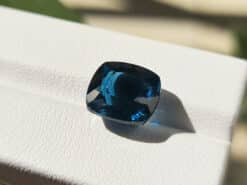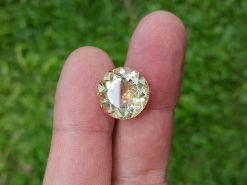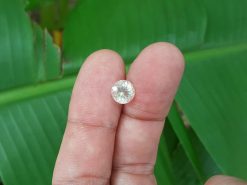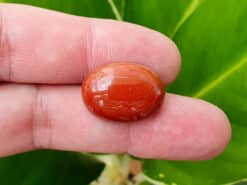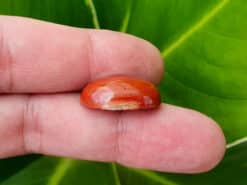Clinohumite

Clinohumite is an uncommon member of the humite group.
Buy natural gemstones in our shop
Clinohumite gemstone
A magnesium silicate according to the chemical formula (Mg, Fe)9(SiO4)4(F,OH)2. The formula can be thought of as four olivine (Mg2SiO4), plus one brucite (Mg(OH)2). Indeed, the mineral is essentially a hydrated olivine and occurs in altered ultramafic rocks and carbonatites.
Most commonly found as tiny indistinct grains. Collectors search for large crystals of euhedral clinohumite. And it occasionally fashioned into bright, also yellow-orange gemstones.
Only two sources of gem-quality material are known: the Pamir Mountains of Tajikistan, and also the Taymyr region of northern Siberia. It is one of two humite group minerals. It have been cut into gems. The other being the much more common chondrodite.
A monoclinic mineral
A monoclinic mineral, clinohumite is typically a dark to light brownish or also orangy yellow. Somewhat resembling the hessonite variety of grossular garnet. Clinohumite’s crystal habit is usually granular. But It may also be prismatic, crystals are almost always small.
Simple and multiple crystal twinning is common. It results in a highly variable habit. It is brittle with a hardness of 6. And a poor basal cleavage. Its specific gravity is 3.2 to 3.4. and its also fracture is conchoidal to uneven. Its streak is white.
The Taymyr material is reported to be a dark reddish brown. While the Pamir material is a bright yellow to orange or also brownish orange. The Pamir material also has a hardness slightly greater than 6. A lower specific gravity 3.18.
And higher maximum birefringence 0.036. Phillip Youngman, master faceter of Los Osos, California, noticed not only that Pamir material is harder than expected. But also that it is less brittle than expected. Youngman observed that clinohumite reacted like beryl to cutting and polishing. And that it reminded him of polishing diopside.
Like other members of the humite group. The relative amounts of hydroxyl and also fluorine vary in clinohumite, and iron. It commonly substitutes for some of the magnesium. It brings about changes in physical and also optical properties. Titanium substitution also causes pronounced changes in optical properties.
It produces the variety titanclinohumite. Consequently, it is relatively easy to determine that a stone is a humite group mineral. But it s difficult to determine exactly which member. Other common impurities of clinohumite include aluminium, also manganese, and calcium.

